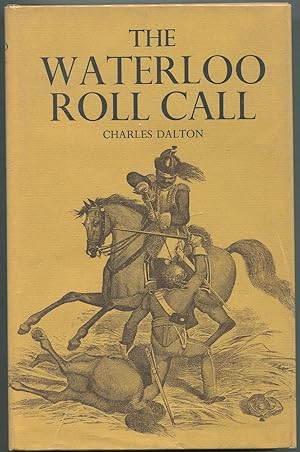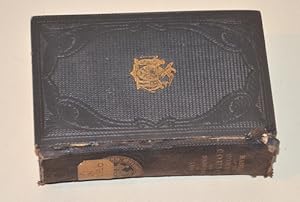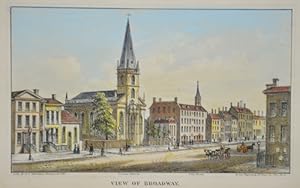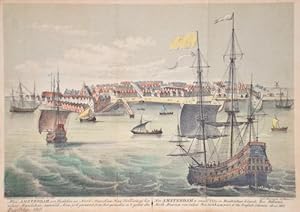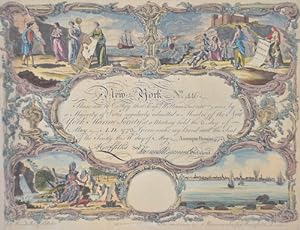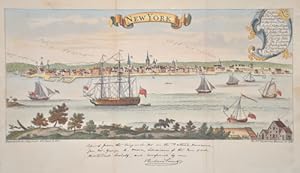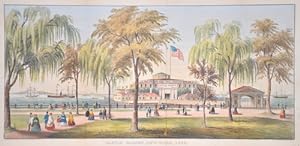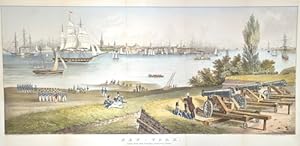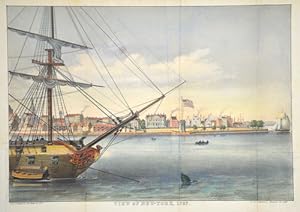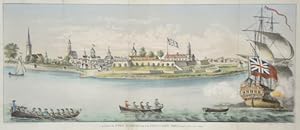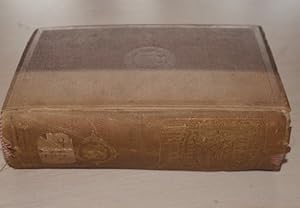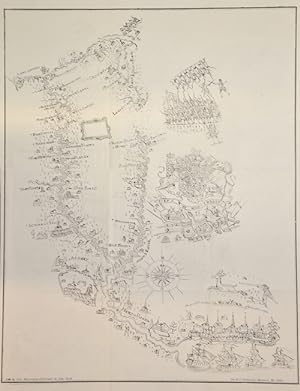hayward books (18 Ergebnisse)
FeedbackSuchfilter
Produktart
- Alle Product Types
- Bücher (9)
- Magazine & Zeitschriften (Keine weiteren Ergebnisse entsprechen dieser Verfeinerung)
- Comics (Keine weiteren Ergebnisse entsprechen dieser Verfeinerung)
- Noten (Keine weiteren Ergebnisse entsprechen dieser Verfeinerung)
- Kunst, Grafik & Poster (9)
- Fotografien (Keine weiteren Ergebnisse entsprechen dieser Verfeinerung)
- Karten (Keine weiteren Ergebnisse entsprechen dieser Verfeinerung)
- Manuskripte & Papierantiquitäten (Keine weiteren Ergebnisse entsprechen dieser Verfeinerung)
Zustand
- Alle
- Neu (Keine weiteren Ergebnisse entsprechen dieser Verfeinerung)
- Antiquarisch (18)
Einband
- alle Einbände
- Hardcover (7)
- Softcover (Keine weiteren Ergebnisse entsprechen dieser Verfeinerung)
Weitere Eigenschaften
- Erstausgabe (1)
- Signiert (Keine weiteren Ergebnisse entsprechen dieser Verfeinerung)
- Schutzumschlag (1)
- Angebotsfoto (14)
Gratisversand
- Kostenloser Versand nach Deutschland (Keine weiteren Ergebnisse entsprechen dieser Verfeinerung)
Verkäuferbewertung
-
A Guide for the Advanced Soul
Verlag: Hayward Books (edition 3rd), 1999
ISBN 10: 0957702515 ISBN 13: 9780957702516
Anbieter: BooksRun, Philadelphia, PA, USA
Hardcover. Zustand: Good. 3rd. Ship within 24hrs. Satisfaction 100% guaranteed. APO/FPO addresses supported.
-
Bag of Jewels
Verlag: Hayward Books, 1999
ISBN 10: 0957702531 ISBN 13: 9780957702530
Anbieter: WorldofBooks, Goring-By-Sea, WS, Vereinigtes Königreich
Hardback. Zustand: Very Good. The book has been read, but is in excellent condition. Pages are intact and not marred by notes or highlighting. The spine remains undamaged.
-
The Waterloo Roll Call
Verlag: Arms and Armour Press / J.B. Hayward and Son / Hippocrene Books, London / New York, 1978
ISBN 10: 0853680574 ISBN 13: 9780853680574
Anbieter: Between the Covers-Rare Books, Inc. ABAA, Gloucester City, NJ, USA
Hardcover. Zustand: Fine. Zustand des Schutzumschlags: Very Good. Second printing. 296pp. Fine in a very good price-clipped dustwrapper with closed tears on bottom edges and internal tape repair.
-
Light Show
Verlag: London: Koenig Books / Hayward Gallery, 2013, 1. Aufl., 208 S./pp., Bildband/Ausstellungskatalog, 32 x 25 cm, ill. OPappband. / Hardcover. (9783863352882), 2013
ISBN 10: 3863352882 ISBN 13: 9783863352882
Anbieter: BuchKunst-Usedom / Kunsthalle, Seebad Ahlbeck, Deutschland
Erstausgabe
ill. OPappband. / Hardcover. 1. Aufl. Light has the power to transform our vision, alter our spatial perceptions andeven change our moods. As an artistic 'medium', it is explored in full in thisbeautifully produced book. Light Show will include some of the most visually stimulating and compelling artworks created using light since the 1960s, as well as new artworks by contemporary artists commissioned specially for the show. Featuring over 20 artists, Light Show takes as its starting point the sculptural use of light as a way of altering our perception of space in contemporary art. Individual artworks featured here explore aesthetic qualities such as colour, duration, black light, shadows, natural and artificial light, and projection, most in immersive, experiential environments. The use of light as a means of expressing more socially or politically-driven concerns is also addressed, as are the inroads made by cutting-edge technology in contemporary light installation; LEDs, bespoke bulbs and computer-controlled lighting all make an appearance in these works. An essential record of the first major survey exhibition of its kind in the UK, this rigorous, authoritative guide to light as art is an essential addition to the literature of sculpture and installation. The catalogue will also feature artist profiles which will address and illustrate each artist's specific usage of light. (Sehr gut erhalten - neuwertig / in very good condition - as new) Sprache: Englisch Gewicht in Gramm: 2300.
-
Being Hayward, Susan
Verlag: Hayward Books, 2002
ISBN 10: 0959043985 ISBN 13: 9780959043983
Anbieter: biblioMundo, St. Leon-Rot, Deutschland
Gebundene Ausgabe. Zustand: Gebraucht - Gut. 1. Auflage, 1997. leichte Gebrauchsspuren am Einband. Besitzervermerk. Wenige Stellen im Text markiert. Seiten sehr gut erhalten.
-
Manual of the Common Council of New-York 1862
Verlag: Artist: Valentine's Manual/Hayward G DT ( - 1869 ) New York ; issued in: New York; - David T (Thomas) Valentine (1801 - 1869) served as the Clerk of the Common Council of New York City He edited and published a series of New York City almanacs and fact books entitled Manual of the Corporation Of The City of New York Valentine's Manual as it came to be called included facts about the City of New York city council information city history and reported on the progress of public works such as Central Park The production of this annual manual was the responsibility of the Clerk of the City of New York a position held at different times by D Valentine and by Joseph Shannon who also produced a similar manual Valentine used his manual to reproduce, 1801
Anbieter: Antique Sommer& Sapunaru KG, München, Deutschland
Technic: Lithography, colorit: black/white, condition: Binding with embossed hard cover and gold embossing, breaking point, size (in cm): 19 x 13,5 cm; - Manual of New York with 1 folding map and 42 chromolithography views. Full brown embossed leather with gilt spine and cover. Old New York map showing Dutch activities in the East Village. Illustrations complete according to the "Index to the Illustrations in the Manuals of the Corporation of the City of New York", The "Manuals of the Corporation" were directories of extensive historical and contemporary records of New York compiled by D.T. Valentine. These books contain detailed information on City Council meetings, ordinances passed, public officials, the city's debts, directories of hospitals, almshouses, and schools, ferry schedules, lists of public carriers, demographic and census information, and descriptions of historic buildings and streets. Much of the information comes from Dutch and English sources edited by Valentine. Notable illustrations in this edition include "New York, c. 1790."; History: Under the discovery of Americans, we understand the first sighting of the continent by seafarers from the global civilization. Around 1000, the Vikings established a short-lived settlement in Newfoundland, now known as L'Anse aux Meadows. Speculations exist about other Old World discoveries of the New World, but none of these are generally or completely accepted by most scholars. Spain sponsored a major exploration led by Italian explorer Christopher Columbus in 1492; it quickly led to extensive European colonization of the Americas. The Europeans brought Old World diseases which are thought to have caused catastrophic epidemics and a huge decrease of the native population. Columbus came at a time in which many technical developments in sailing techniques and communication made it possible to report his voyages easily and to spread word of them throughout Europe. It was also a time of growing religious, imperial and economic rivalries that led to a competition for the establishment of colonies. The formation of sovereign states in the New World began with the United States Declaration of Independence of 1776. The American Revolutionary War lasted through the period of the Siege of Yorktown ? its last major campaign ? in the early autumn of 1781, with peace being achieved in 1783. The Spanish colonies won their independence in the first quarter of the 19th century, in the Spanish American wars of independence. Simón Bolívar and José de San Martín, among others, led their independence struggle. Although Bolivar attempted to keep the Spanish-speaking parts of Latin America politically allied, they rapidly became independent of one another as well, and several further wars were fought, such as the Paraguayan War and the War of the Pacific. (See Latin American integration.) In the Portuguese colony Dom Pedro I (also Pedro IV of Portugal), son of the Portuguese king Dom João VI, proclaimed the country's independence in 1822 and became Brazil's first Emperor. This was peacefully accepted by the crown in Portugal, upon compensation.
-
View of Broadway
Verlag: Artist: Valentine's Manual/Hayward G DT ( - 1869 ) New York ; issued in: New York; - David T (Thomas) Valentine (1801 - 1869) served as the Clerk of the Common Council of New York City He edited and published a series of New York City almanacs and fact books entitled Manual of the Corporation Of The City of New York Valentine's Manual as it came to be called included facts about the City of New York city council information city history and reported on the progress of public works such as Central Park The production of this annual manual was the responsibility of the Clerk of the City of New York a position held at different times by D Valentine and by Joseph Shannon who also produced a similar manual Valentine used his manual to reproduce, 1801
Anbieter: Antique Sommer& Sapunaru KG, München, Deutschland
Kunst / Grafik / Poster
Technic: Lithography, colorit: colored, condition: Very good, size (in cm): 9 x 15; - The Broadway in New York; History: First voyages of discovery to the area of today's New York took place in 1524 by Giovanni da Verrazzano and in 1609 by Henry Hudson. Starting in 1610, Dutch merchants began a lucrative fur trade with the Indians living there. In March 1614, the newly formed Compagnie van Nieuwnederlant (New Netherland Company) was granted a monopoly by the States General to trade in the area. In October 1618, ten months after the trade monopoly expired, the company applied for a new charter. At that time, however, the States General were already considering the creation of a new company, the Dutch West India Company (WIC). On June 3, 1621, the WIC received a charter from the Republic of the Seven United Provinces to trade solely in the Americas. Colonization began in 1624 when 30 Dutch, Walloon and French families settled on Manhattan Island and in the Delaware area. According to legend, in 1626 Peter Minuit bought the island from the natives, probably a branch of the Lenni-Lenape Indians who called the island "Manna-hatta", for 60 guilders.The newly founded settlement was named Nieuw Amsterdam and became the capital of the colony of Nieuw Nederland.Chaotic conditions soon prevailed in the settlement. Under the rule of corrupt governors, crime increased enormously.In 1647, the Dutch West India Company decided to restore order. Petrus Stuyvesant was to take on this task. During his 17-year term as governor, the first hospital, the first prison and the first school were built. As protection against raids, he had a wall built across the island to the north of the city in 1652, which would later give its name to the street running along it, Wall Street. On February 2, 1653, Nieuw Amsterdam received its city charter. On September 8, 1664, the city surrendered without a fight to a Royal Navy fleet led by Richard Nicolls.The English named the city and the colony of New York after their then commander James, Duke of York, brother of Charles II of England, who later became king himself. In 1667, the Dutch relinquished all claims to the colony in the Peace of Breda, in which they were granted rights to Suriname in exchange. In the ensuing Third Anglo-Dutch War, the Dutch briefly retook the colony in 1673 through Cornelis Evertsen before finally having to surrender the land by signing the Treaty of Westminster on February 19, 1674. From 1788 to 1790, New York was the capital of the United States. George Washington was sworn in as the first president on the balcony of New York's Federal Hall in 1789. In the difficult economic times following the war, securities traders established the New York Stock Exchange on May 17, 1792. On April 13, 1796, the first elephant in America arrived in New York Harbor. In 1797, Albany was designated the capital of New York State instead of New York and remains so today.
-
New Amsterdam a small City en Manhatten Island, New-Holland, North America now called New-York .
Verlag: Artist: Valentine's Manual/Hayward G DT ( - 1869 ) New York ; issued in: ; - David T (Thomas) Valentine (1801 - 1869) served as the Clerk of the Common Council of New York City He edited and published a series of New York City almanacs and fact books entitled Manual of the Corporation Of The City of New York Valentine's Manual as it came to be called included facts about the City of New York city council information city history and reported on the progress of public works such as Central Park The production of this annual manual was the responsibility of the Clerk of the City of New York a position held at different times by D Valentine and by Joseph Shannon who also produced a similar manual Valentine used his manual to reproduce some of, 1801
Anbieter: Antique Sommer& Sapunaru KG, München, Deutschland
Kunst / Grafik / Poster
Technic: Lithography, colorit: colored, condition: Perfect condition, size (in cm): 17,5 x 25 cm; - View of the city New York with the Hudson river and decorative offshore ships in the foreground.; History: First voyages of discovery to the area of today's New York took place in 1524 by Giovanni da Verrazzano and in 1609 by Henry Hudson. Starting in 1610, Dutch merchants began a lucrative fur trade with the Indians living there. In March 1614, the newly formed Compagnie van Nieuwnederlant (New Netherland Company) was granted a monopoly by the States General to trade in the area. In October 1618, ten months after the trade monopoly expired, the company applied for a new charter. At that time, however, the States General were already considering the creation of a new company, the Dutch West India Company (WIC). On June 3, 1621, the WIC received a charter from the Republic of the Seven United Provinces to trade solely in the Americas. Colonization began in 1624 when 30 Dutch, Walloon and French families settled on Manhattan Island and in the Delaware area. According to legend, in 1626 Peter Minuit bought the island from the natives, probably a branch of the Lenni-Lenape Indians who called the island "Manna-hatta", for 60 guilders.The newly founded settlement was named Nieuw Amsterdam and became the capital of the colony of Nieuw Nederland.Chaotic conditions soon prevailed in the settlement. Under the rule of corrupt governors, crime increased enormously.In 1647, the Dutch West India Company decided to restore order. Petrus Stuyvesant was to take on this task. During his 17-year term as governor, the first hospital, the first prison and the first school were built. As protection against raids, he had a wall built across the island to the north of the city in 1652, which would later give its name to the street running along it, Wall Street. On February 2, 1653, Nieuw Amsterdam received its city charter. On September 8, 1664, the city surrendered without a fight to a Royal Navy fleet led by Richard Nicolls.The English named the city and the colony of New York after their then commander James, Duke of York, brother of Charles II of England, who later became king himself. In 1667, the Dutch relinquished all claims to the colony in the Peace of Breda, in which they were granted rights to Suriname in exchange. In the ensuing Third Anglo-Dutch War, the Dutch briefly retook the colony in 1673 through Cornelis Evertsen before finally having to surrender the land by signing the Treaty of Westminster on February 19, 1674. From 1788 to 1790, New York was the capital of the United States. George Washington was sworn in as the first president on the balcony of New York's Federal Hall in 1789. In the difficult economic times following the war, securities traders established the New York Stock Exchange on May 17, 1792. On April 13, 1796, the first elephant in America arrived in New York Harbor. In 1797, Albany was designated the capital of New York State instead of New York and remains so today.
-
Launch of the steam Frigate Fulton the First, at New York 29th Oct. 1814
Verlag: Artist: Valentine's Manual/Hayward G DT ( - 1869 ) New York ; issued in: New York; - David T (Thomas) Valentine (1801 - 1869) served as the Clerk of the Common Council of New York City He edited and published a series of New York City almanacs and fact books entitled Manual of the Corporation Of The City of New York Valentine's Manual as it came to be called included facts about the City of New York city council information city history and reported on the progress of public works such as Central Park The production of this annual manual was the responsibility of the Clerk of the City of New York a position held at different times by D Valentine and by Joseph Shannon who also produced a similar manual Valentine used his manual to reproduce, 1801
Anbieter: Antique Sommer& Sapunaru KG, München, Deutschland
Kunst / Grafik / Poster
Technic: Lithography, colorit: original colored, condition: Very good, size (in cm): 18 x 36,5; - View of the Harbour of New York and the launch of Fulton I.; History: First voyages of discovery to the area of today's New York took place in 1524 by Giovanni da Verrazzano and in 1609 by Henry Hudson. Starting in 1610, Dutch merchants began a lucrative fur trade with the Indians living there. In March 1614, the newly formed Compagnie van Nieuwnederlant (New Netherland Company) was granted a monopoly by the States General to trade in the area. In October 1618, ten months after the trade monopoly expired, the company applied for a new charter. At that time, however, the States General were already considering the creation of a new company, the Dutch West India Company (WIC). On June 3, 1621, the WIC received a charter from the Republic of the Seven United Provinces to trade solely in the Americas. Colonization began in 1624 when 30 Dutch, Walloon and French families settled on Manhattan Island and in the Delaware area. According to legend, in 1626 Peter Minuit bought the island from the natives, probably a branch of the Lenni-Lenape Indians who called the island "Manna-hatta", for 60 guilders.The newly founded settlement was named Nieuw Amsterdam and became the capital of the colony of Nieuw Nederland.Chaotic conditions soon prevailed in the settlement. Under the rule of corrupt governors, crime increased enormously.In 1647, the Dutch West India Company decided to restore order. Petrus Stuyvesant was to take on this task. During his 17-year term as governor, the first hospital, the first prison and the first school were built. As protection against raids, he had a wall built across the island to the north of the city in 1652, which would later give its name to the street running along it, Wall Street. On February 2, 1653, Nieuw Amsterdam received its city charter. On September 8, 1664, the city surrendered without a fight to a Royal Navy fleet led by Richard Nicolls.The English named the city and the colony of New York after their then commander James, Duke of York, brother of Charles II of England, who later became king himself. In 1667, the Dutch relinquished all claims to the colony in the Peace of Breda, in which they were granted rights to Suriname in exchange. In the ensuing Third Anglo-Dutch War, the Dutch briefly retook the colony in 1673 through Cornelis Evertsen before finally having to surrender the land by signing the Treaty of Westminster on February 19, 1674. From 1788 to 1790, New York was the capital of the United States. George Washington was sworn in as the first president on the balcony of New York's Federal Hall in 1789. In the difficult economic times following the war, securities traders established the New York Stock Exchange on May 17, 1792. On April 13, 1796, the first elephant in America arrived in New York Harbor. In 1797, Albany was designated the capital of New York State instead of New York and remains so today.
-
New-York No. 446 These are to Certify that Capt William Turner was by a Majority of Notes regularly admitted a Member of the New York Marine Society.
Verlag: Artist: Valentine's Manual/Hayward G DT ( - 1869 ) New York ; issued in: New York; - David T (Thomas) Valentine (1801 - 1869) served as the Clerk of the Common Council of New York City He edited and published a series of New York City almanacs and fact books entitled Manual of the Corporation Of The City of New York Valentine's Manual as it came to be called included facts about the City of New York city council information city history and reported on the progress of public works such as Central Park The production of this annual manual was the responsibility of the Clerk of the City of New York a position held at different times by D Valentine and by Joseph Shannon who also produced a similar manual Valentine used his manual to reproduce, 1801
Anbieter: Antique Sommer& Sapunaru KG, München, Deutschland
Kunst / Grafik / Poster
Technic: Lithography, colorit: original colored, condition: Some folds perfectly restored, size (in cm): 20,5 x 27 cm; - Certificate of membership of the New York Marine Society. New-York No. 446 - These are to Certify that Capt William Turner was by a Majority of Notes regularly admitted a Member of the New York Marine Society at a meeting held the 3 day of May 1773. Given under my Hand and the Seal of the Society this 11 day of May 1773.; History: First voyages of discovery to the area of today's New York took place in 1524 by Giovanni da Verrazzano and in 1609 by Henry Hudson. Starting in 1610, Dutch merchants began a lucrative fur trade with the Indians living there. In March 1614, the newly formed Compagnie van Nieuwnederlant (New Netherland Company) was granted a monopoly by the States General to trade in the area. In October 1618, ten months after the trade monopoly expired, the company applied for a new charter. At that time, however, the States General were already considering the creation of a new company, the Dutch West India Company (WIC). On June 3, 1621, the WIC received a charter from the Republic of the Seven United Provinces to trade solely in the Americas. Colonization began in 1624 when 30 Dutch, Walloon and French families settled on Manhattan Island and in the Delaware area. According to legend, in 1626 Peter Minuit bought the island from the natives, probably a branch of the Lenni-Lenape Indians who called the island "Manna-hatta", for 60 guilders.The newly founded settlement was named Nieuw Amsterdam and became the capital of the colony of Nieuw Nederland.Chaotic conditions soon prevailed in the settlement. Under the rule of corrupt governors, crime increased enormously.In 1647, the Dutch West India Company decided to restore order. Petrus Stuyvesant was to take on this task. During his 17-year term as governor, the first hospital, the first prison and the first school were built. As protection against raids, he had a wall built across the island to the north of the city in 1652, which would later give its name to the street running along it, Wall Street. On February 2, 1653, Nieuw Amsterdam received its city charter. On September 8, 1664, the city surrendered without a fight to a Royal Navy fleet led by Richard Nicolls.The English named the city and the colony of New York after their then commander James, Duke of York, brother of Charles II of England, who later became king himself. In 1667, the Dutch relinquished all claims to the colony in the Peace of Breda, in which they were granted rights to Suriname in exchange. In the ensuing Third Anglo-Dutch War, the Dutch briefly retook the colony in 1673 through Cornelis Evertsen before finally having to surrender the land by signing the Treaty of Westminster on February 19, 1674. From 1788 to 1790, New York was the capital of the United States. George Washington was sworn in as the first president on the balcony of New York's Federal Hall in 1789. In the difficult economic times following the war, securities traders established the New York Stock Exchange on May 17, 1792. On April 13, 1796, the first elephant in America arrived in New York Harbor. In 1797, Albany was designated the capital of New York State instead of New York and remains so today.
-
New York
Verlag: Artist: Valentine's Manual/Hayward G DT ( - 1869 ) New York ; issued in: ; - David T (Thomas) Valentine (1801 - 1869) served as the Clerk of the Common Council of New York City He edited and published a series of New York City almanacs and fact books entitled Manual of the Corporation Of The City of New York Valentine's Manual as it came to be called included facts about the City of New York city council information city history and reported on the progress of public works such as Central Park The production of this annual manual was the responsibility of the Clerk of the City of New York a position held at different times by D Valentine and by Joseph Shannon who also produced a similar manual Valentine used his manual to reproduce some of, 1801
Anbieter: Antique Sommer& Sapunaru KG, München, Deutschland
Kunst / Grafik / Poster
Technic: Lithography, colorit: colored, condition: Very good, size (in cm): 15 x 26; - View of the city New York with the Hudson river; History: First voyages of discovery to the area of today's New York took place in 1524 by Giovanni da Verrazzano and in 1609 by Henry Hudson. Starting in 1610, Dutch merchants began a lucrative fur trade with the Indians living there. In March 1614, the newly formed Compagnie van Nieuwnederlant (New Netherland Company) was granted a monopoly by the States General to trade in the area. In October 1618, ten months after the trade monopoly expired, the company applied for a new charter. At that time, however, the States General were already considering the creation of a new company, the Dutch West India Company (WIC). On June 3, 1621, the WIC received a charter from the Republic of the Seven United Provinces to trade solely in the Americas. Colonization began in 1624 when 30 Dutch, Walloon and French families settled on Manhattan Island and in the Delaware area. According to legend, in 1626 Peter Minuit bought the island from the natives, probably a branch of the Lenni-Lenape Indians who called the island "Manna-hatta", for 60 guilders.The newly founded settlement was named Nieuw Amsterdam and became the capital of the colony of Nieuw Nederland.Chaotic conditions soon prevailed in the settlement. Under the rule of corrupt governors, crime increased enormously.In 1647, the Dutch West India Company decided to restore order. Petrus Stuyvesant was to take on this task. During his 17-year term as governor, the first hospital, the first prison and the first school were built. As protection against raids, he had a wall built across the island to the north of the city in 1652, which would later give its name to the street running along it, Wall Street. On February 2, 1653, Nieuw Amsterdam received its city charter. On September 8, 1664, the city surrendered without a fight to a Royal Navy fleet led by Richard Nicolls.The English named the city and the colony of New York after their then commander James, Duke of York, brother of Charles II of England, who later became king himself. In 1667, the Dutch relinquished all claims to the colony in the Peace of Breda, in which they were granted rights to Suriname in exchange. In the ensuing Third Anglo-Dutch War, the Dutch briefly retook the colony in 1673 through Cornelis Evertsen before finally having to surrender the land by signing the Treaty of Westminster on February 19, 1674. From 1788 to 1790, New York was the capital of the United States. George Washington was sworn in as the first president on the balcony of New York's Federal Hall in 1789. In the difficult economic times following the war, securities traders established the New York Stock Exchange on May 17, 1792. On April 13, 1796, the first elephant in America arrived in New York Harbor. In 1797, Albany was designated the capital of New York State instead of New York and remains so today.
-
Castle Garden, New-York, 1852.
Verlag: Artist: Valentine's Manual/Hayward G DT ( - 1869 ) New York ; issued in: New York; - David T (Thomas) Valentine (1801 - 1869) served as the Clerk of the Common Council of New York City He edited and published a series of New York City almanacs and fact books entitled Manual of the Corporation Of The City of New York Valentine's Manual as it came to be called included facts about the City of New York city council information city history and reported on the progress of public works such as Central Park The production of this annual manual was the responsibility of the Clerk of the City of New York a position held at different times by D Valentine and by Joseph Shannon who also produced a similar manual Valentine used his manual to reproduce, 1801
Anbieter: Antique Sommer& Sapunaru KG, München, Deutschland
Kunst / Grafik / Poster
Technic: Lithography, colorit: original colored, condition: Some folds, size (in cm): 15,5 x 32 cm; - View shows the Palace Gardens in New York during the time when it was used as an entertainment center. This was originally built as a military fortress. Based on the original drawing by G. Hayward.; History: First voyages of discovery to the area of today's New York took place in 1524 by Giovanni da Verrazzano and in 1609 by Henry Hudson. Starting in 1610, Dutch merchants began a lucrative fur trade with the Indians living there. In March 1614, the newly formed Compagnie van Nieuwnederlant (New Netherland Company) was granted a monopoly by the States General to trade in the area. In October 1618, ten months after the trade monopoly expired, the company applied for a new charter. At that time, however, the States General were already considering the creation of a new company, the Dutch West India Company (WIC). On June 3, 1621, the WIC received a charter from the Republic of the Seven United Provinces to trade solely in the Americas. Colonization began in 1624 when 30 Dutch, Walloon and French families settled on Manhattan Island and in the Delaware area. According to legend, in 1626 Peter Minuit bought the island from the natives, probably a branch of the Lenni-Lenape Indians who called the island "Manna-hatta", for 60 guilders.The newly founded settlement was named Nieuw Amsterdam and became the capital of the colony of Nieuw Nederland.Chaotic conditions soon prevailed in the settlement. Under the rule of corrupt governors, crime increased enormously.In 1647, the Dutch West India Company decided to restore order. Petrus Stuyvesant was to take on this task. During his 17-year term as governor, the first hospital, the first prison and the first school were built. As protection against raids, he had a wall built across the island to the north of the city in 1652, which would later give its name to the street running along it, Wall Street. On February 2, 1653, Nieuw Amsterdam received its city charter. On September 8, 1664, the city surrendered without a fight to a Royal Navy fleet led by Richard Nicolls.The English named the city and the colony of New York after their then commander James, Duke of York, brother of Charles II of England, who later became king himself. In 1667, the Dutch relinquished all claims to the colony in the Peace of Breda, in which they were granted rights to Suriname in exchange. In the ensuing Third Anglo-Dutch War, the Dutch briefly retook the colony in 1673 through Cornelis Evertsen before finally having to surrender the land by signing the Treaty of Westminster on February 19, 1674. From 1788 to 1790, New York was the capital of the United States. George Washington was sworn in as the first president on the balcony of New York's Federal Hall in 1789. In the difficult economic times following the war, securities traders established the New York Stock Exchange on May 17, 1792. On April 13, 1796, the first elephant in America arrived in New York Harbor. In 1797, Albany was designated the capital of New York State instead of New York and remains so today.
-
New-York. Taken from Fort Columbus, Governors Island. 1816
Verlag: Artist: Valentine's Manual/Hayward G DT ( - 1869 ) New York ; issued in: New York; - David T (Thomas) Valentine (1801 - 1869) served as the Clerk of the Common Council of New York City He edited and published a series of New York City almanacs and fact books entitled Manual of the Corporation Of The City of New York Valentine's Manual as it came to be called included facts about the City of New York city council information city history and reported on the progress of public works such as Central Park The production of this annual manual was the responsibility of the Clerk of the City of New York a position held at different times by D Valentine and by Joseph Shannon who also produced a similar manual Valentine used his manual to reproduce, 1801
Anbieter: Antique Sommer& Sapunaru KG, München, Deutschland
Kunst / Grafik / Poster
Technic: Lithography, colorit: original colored, condition: Left margin partly enlarged., size (in cm): 21 x 46 cm; - New-York in 1816. This view, which shows New York City as it appears from Fort Columbus on Governor's Island, was issued in the 1860 edition of Valentine's Manual. Ships fill the harbor, fishermen ply the shore and some soldiers drill. Engraved by the artist George Hayward.; History: First voyages of discovery to the area of today's New York took place in 1524 by Giovanni da Verrazzano and in 1609 by Henry Hudson. Starting in 1610, Dutch merchants began a lucrative fur trade with the Indians living there. In March 1614, the newly formed Compagnie van Nieuwnederlant (New Netherland Company) was granted a monopoly by the States General to trade in the area. In October 1618, ten months after the trade monopoly expired, the company applied for a new charter. At that time, however, the States General were already considering the creation of a new company, the Dutch West India Company (WIC). On June 3, 1621, the WIC received a charter from the Republic of the Seven United Provinces to trade solely in the Americas. Colonization began in 1624 when 30 Dutch, Walloon and French families settled on Manhattan Island and in the Delaware area. According to legend, in 1626 Peter Minuit bought the island from the natives, probably a branch of the Lenni-Lenape Indians who called the island "Manna-hatta", for 60 guilders.The newly founded settlement was named Nieuw Amsterdam and became the capital of the colony of Nieuw Nederland.Chaotic conditions soon prevailed in the settlement. Under the rule of corrupt governors, crime increased enormously.In 1647, the Dutch West India Company decided to restore order. Petrus Stuyvesant was to take on this task. During his 17-year term as governor, the first hospital, the first prison and the first school were built. As protection against raids, he had a wall built across the island to the north of the city in 1652, which would later give its name to the street running along it, Wall Street. On February 2, 1653, Nieuw Amsterdam received its city charter. On September 8, 1664, the city surrendered without a fight to a Royal Navy fleet led by Richard Nicolls.The English named the city and the colony of New York after their then commander James, Duke of York, brother of Charles II of England, who later became king himself. In 1667, the Dutch relinquished all claims to the colony in the Peace of Breda, in which they were granted rights to Suriname in exchange. In the ensuing Third Anglo-Dutch War, the Dutch briefly retook the colony in 1673 through Cornelis Evertsen before finally having to surrender the land by signing the Treaty of Westminster on February 19, 1674. From 1788 to 1790, New York was the capital of the United States. George Washington was sworn in as the first president on the balcony of New York's Federal Hall in 1789. In the difficult economic times following the war, securities traders established the New York Stock Exchange on May 17, 1792. On April 13, 1796, the first elephant in America arrived in New York Harbor. In 1797, Albany was designated the capital of New York State instead of New York and remains so today.
-
View of New York, 1787
Verlag: Artist: Valentine's Manual/Hayward G DT ( - 1869 ) New York ; issued in: New York; - David T (Thomas) Valentine (1801 - 1869) served as the Clerk of the Common Council of New York City He edited and published a series of New York City almanacs and fact books entitled Manual of the Corporation Of The City of New York Valentine's Manual as it came to be called included facts about the City of New York city council information city history and reported on the progress of public works such as Central Park The production of this annual manual was the responsibility of the Clerk of the City of New York a position held at different times by D Valentine and by Joseph Shannon who also produced a similar manual Valentine used his manual to reproduce, 1801
Anbieter: Antique Sommer& Sapunaru KG, München, Deutschland
Kunst / Grafik / Poster
Technic: Lithography, colorit: colored, condition: Very good, size (in cm): 20,5 x 28,5; - View if the city of New York from the harbour; History: First voyages of discovery to the area of today's New York took place in 1524 by Giovanni da Verrazzano and in 1609 by Henry Hudson. Starting in 1610, Dutch merchants began a lucrative fur trade with the Indians living there. In March 1614, the newly formed Compagnie van Nieuwnederlant (New Netherland Company) was granted a monopoly by the States General to trade in the area. In October 1618, ten months after the trade monopoly expired, the company applied for a new charter. At that time, however, the States General were already considering the creation of a new company, the Dutch West India Company (WIC). On June 3, 1621, the WIC received a charter from the Republic of the Seven United Provinces to trade solely in the Americas. Colonization began in 1624 when 30 Dutch, Walloon and French families settled on Manhattan Island and in the Delaware area. According to legend, in 1626 Peter Minuit bought the island from the natives, probably a branch of the Lenni-Lenape Indians who called the island "Manna-hatta", for 60 guilders.The newly founded settlement was named Nieuw Amsterdam and became the capital of the colony of Nieuw Nederland.Chaotic conditions soon prevailed in the settlement. Under the rule of corrupt governors, crime increased enormously.In 1647, the Dutch West India Company decided to restore order. Petrus Stuyvesant was to take on this task. During his 17-year term as governor, the first hospital, the first prison and the first school were built. As protection against raids, he had a wall built across the island to the north of the city in 1652, which would later give its name to the street running along it, Wall Street. On February 2, 1653, Nieuw Amsterdam received its city charter. On September 8, 1664, the city surrendered without a fight to a Royal Navy fleet led by Richard Nicolls.The English named the city and the colony of New York after their then commander James, Duke of York, brother of Charles II of England, who later became king himself. In 1667, the Dutch relinquished all claims to the colony in the Peace of Breda, in which they were granted rights to Suriname in exchange. In the ensuing Third Anglo-Dutch War, the Dutch briefly retook the colony in 1673 through Cornelis Evertsen before finally having to surrender the land by signing the Treaty of Westminster on February 19, 1674. From 1788 to 1790, New York was the capital of the United States. George Washington was sworn in as the first president on the balcony of New York's Federal Hall in 1789. In the difficult economic times following the war, securities traders established the New York Stock Exchange on May 17, 1792. On April 13, 1796, the first elephant in America arrived in New York Harbor. In 1797, Albany was designated the capital of New York State instead of New York and remains so today.
-
A view of Fort George with the city of New York from the s.w. 1740
Verlag: Artist: Valentine's Manual/Hayward G DT ( - 1869 ) New York ; issued in: New York; - David T (Thomas) Valentine (1801 - 1869) served as the Clerk of the Common Council of New York City He edited and published a series of New York City almanacs and fact books entitled Manual of the Corporation Of The City of New York Valentine's Manual as it came to be called included facts about the City of New York city council information city history and reported on the progress of public works such as Central Park The production of this annual manual was the responsibility of the Clerk of the City of New York a position held at different times by D Valentine and by Joseph Shannon who also produced a similar manual Valentine used his manual to reproduce, 1801
Anbieter: Antique Sommer& Sapunaru KG, München, Deutschland
Kunst / Grafik / Poster
Technic: Lithography, colorit: colored, condition: Very good, size (in cm): 16,5 x 39; - View of the city of New York from the south west with ship representation; History: First voyages of discovery to the area of today's New York took place in 1524 by Giovanni da Verrazzano and in 1609 by Henry Hudson. Starting in 1610, Dutch merchants began a lucrative fur trade with the Indians living there. In March 1614, the newly formed Compagnie van Nieuwnederlant (New Netherland Company) was granted a monopoly by the States General to trade in the area. In October 1618, ten months after the trade monopoly expired, the company applied for a new charter. At that time, however, the States General were already considering the creation of a new company, the Dutch West India Company (WIC). On June 3, 1621, the WIC received a charter from the Republic of the Seven United Provinces to trade solely in the Americas. Colonization began in 1624 when 30 Dutch, Walloon and French families settled on Manhattan Island and in the Delaware area. According to legend, in 1626 Peter Minuit bought the island from the natives, probably a branch of the Lenni-Lenape Indians who called the island "Manna-hatta", for 60 guilders.The newly founded settlement was named Nieuw Amsterdam and became the capital of the colony of Nieuw Nederland.Chaotic conditions soon prevailed in the settlement. Under the rule of corrupt governors, crime increased enormously.In 1647, the Dutch West India Company decided to restore order. Petrus Stuyvesant was to take on this task. During his 17-year term as governor, the first hospital, the first prison and the first school were built. As protection against raids, he had a wall built across the island to the north of the city in 1652, which would later give its name to the street running along it, Wall Street. On February 2, 1653, Nieuw Amsterdam received its city charter. On September 8, 1664, the city surrendered without a fight to a Royal Navy fleet led by Richard Nicolls.The English named the city and the colony of New York after their then commander James, Duke of York, brother of Charles II of England, who later became king himself. In 1667, the Dutch relinquished all claims to the colony in the Peace of Breda, in which they were granted rights to Suriname in exchange. In the ensuing Third Anglo-Dutch War, the Dutch briefly retook the colony in 1673 through Cornelis Evertsen before finally having to surrender the land by signing the Treaty of Westminster on February 19, 1674. From 1788 to 1790, New York was the capital of the United States. George Washington was sworn in as the first president on the balcony of New York's Federal Hall in 1789. In the difficult economic times following the war, securities traders established the New York Stock Exchange on May 17, 1792. On April 13, 1796, the first elephant in America arrived in New York Harbor. In 1797, Albany was designated the capital of New York State instead of New York and remains so today.
-
Manual of the Corporation City of New York 1868
Verlag: Artist: Valentine's Manual/Hayward G DT ( - 1869 ) New York ; issued in: New York; - David T (Thomas) Valentine (1801 - 1869) served as the Clerk of the Common Council of New York City He edited and published a series of New York City almanacs and fact books entitled Manual of the Corporation Of The City of New York Valentine's Manual as it came to be called included facts about the City of New York city council information city history and reported on the progress of public works such as Central Park The production of this annual manual was the responsibility of the Clerk of the City of New York a position held at different times by D Valentine and by Joseph Shannon who also produced a similar manual Valentine used his manual to reproduce, 1801
Anbieter: Antique Sommer& Sapunaru KG, München, Deutschland
Technic: Mixed Media, colorit: black/white, condition: Binding hard cardboard, book cover missing, size (in cm): 22 x 16 cm; - Book about New York on 912 pages with coloured folding map of New York, title page colour lithograph, portrait with signature of Joseph Shannon, preface, table of contents, 4 folding lithographs in colour, folding map with signatures, folding map of Manhattan in black and white, 13 lithographs in black and white and in colour, furthermore many small wood engravings. Issued by Jones E. & Co.; History: First voyages of discovery to the area of today's New York took place in 1524 by Giovanni da Verrazzano and in 1609 by Henry Hudson. Starting in 1610, Dutch merchants began a lucrative fur trade with the Indians living there. In March 1614, the newly formed Compagnie van Nieuwnederlant (New Netherland Company) was granted a monopoly by the States General to trade in the area. In October 1618, ten months after the trade monopoly expired, the company applied for a new charter. At that time, however, the States General were already considering the creation of a new company, the Dutch West India Company (WIC). On June 3, 1621, the WIC received a charter from the Republic of the Seven United Provinces to trade solely in the Americas. Colonization began in 1624 when 30 Dutch, Walloon and French families settled on Manhattan Island and in the Delaware area. According to legend, in 1626 Peter Minuit bought the island from the natives, probably a branch of the Lenni-Lenape Indians who called the island "Manna-hatta", for 60 guilders.The newly founded settlement was named Nieuw Amsterdam and became the capital of the colony of Nieuw Nederland.Chaotic conditions soon prevailed in the settlement. Under the rule of corrupt governors, crime increased enormously.In 1647, the Dutch West India Company decided to restore order. Petrus Stuyvesant was to take on this task. During his 17-year term as governor, the first hospital, the first prison and the first school were built. As protection against raids, he had a wall built across the island to the north of the city in 1652, which would later give its name to the street running along it, Wall Street. On February 2, 1653, Nieuw Amsterdam received its city charter. On September 8, 1664, the city surrendered without a fight to a Royal Navy fleet led by Richard Nicolls.The English named the city and the colony of New York after their then commander James, Duke of York, brother of Charles II of England, who later became king himself. In 1667, the Dutch relinquished all claims to the colony in the Peace of Breda, in which they were granted rights to Suriname in exchange. In the ensuing Third Anglo-Dutch War, the Dutch briefly retook the colony in 1673 through Cornelis Evertsen before finally having to surrender the land by signing the Treaty of Westminster on February 19, 1674. From 1788 to 1790, New York was the capital of the United States. George Washington was sworn in as the first president on the balcony of New York's Federal Hall in 1789. In the difficult economic times following the war, securities traders established the New York Stock Exchange on May 17, 1792. On April 13, 1796, the first elephant in America arrived in New York Harbor. In 1797, Albany was designated the capital of New York State instead of New York and remains so today.
-
New York
Verlag: Artist: Valentine's Manual/Hayward G DT ( - 1869 ) New York ; issued in: New York; - David T (Thomas) Valentine (1801 - 1869) served as the Clerk of the Common Council of New York City He edited and published a series of New York City almanacs and fact books entitled Manual of the Corporation Of The City of New York Valentine's Manual as it came to be called included facts about the City of New York city council information city history and reported on the progress of public works such as Central Park The production of this annual manual was the responsibility of the Clerk of the City of New York a position held at different times by D Valentine and by Joseph Shannon who also produced a similar manual Valentine used his manual to reproduce, 1801
Anbieter: Antique Sommer& Sapunaru KG, München, Deutschland
Technic: Feather Lithography, colorit: black/white, condition: Tear on the left side perfectly restored, size (in cm): 32 x 25 cm; - Map shows New York to Lake Ontario with the coat of arms of the United Kingdom of Great Britain, an army and a compass rose. - additional information: Rare; History: First voyages of discovery to the area of today's New York took place in 1524 by Giovanni da Verrazzano and in 1609 by Henry Hudson. Starting in 1610, Dutch merchants began a lucrative fur trade with the Indians living there. In March 1614, the newly formed Compagnie van Nieuwnederlant (New Netherland Company) was granted a monopoly by the States General to trade in the area. In October 1618, ten months after the trade monopoly expired, the company applied for a new charter. At that time, however, the States General were already considering the creation of a new company, the Dutch West India Company (WIC). On June 3, 1621, the WIC received a charter from the Republic of the Seven United Provinces to trade solely in the Americas. Colonization began in 1624 when 30 Dutch, Walloon and French families settled on Manhattan Island and in the Delaware area. According to legend, in 1626 Peter Minuit bought the island from the natives, probably a branch of the Lenni-Lenape Indians who called the island "Manna-hatta", for 60 guilders.The newly founded settlement was named Nieuw Amsterdam and became the capital of the colony of Nieuw Nederland.Chaotic conditions soon prevailed in the settlement. Under the rule of corrupt governors, crime increased enormously.In 1647, the Dutch West India Company decided to restore order. Petrus Stuyvesant was to take on this task. During his 17-year term as governor, the first hospital, the first prison and the first school were built. As protection against raids, he had a wall built across the island to the north of the city in 1652, which would later give its name to the street running along it, Wall Street. On February 2, 1653, Nieuw Amsterdam received its city charter. On September 8, 1664, the city surrendered without a fight to a Royal Navy fleet led by Richard Nicolls.The English named the city and the colony of New York after their then commander James, Duke of York, brother of Charles II of England, who later became king himself. In 1667, the Dutch relinquished all claims to the colony in the Peace of Breda, in which they were granted rights to Suriname in exchange. In the ensuing Third Anglo-Dutch War, the Dutch briefly retook the colony in 1673 through Cornelis Evertsen before finally having to surrender the land by signing the Treaty of Westminster on February 19, 1674. From 1788 to 1790, New York was the capital of the United States. George Washington was sworn in as the first president on the balcony of New York's Federal Hall in 1789. In the difficult economic times following the war, securities traders established the New York Stock Exchange on May 17, 1792. On April 13, 1796, the first elephant in America arrived in New York Harbor. In 1797, Albany was designated the capital of New York State instead of New York and remains so today.




